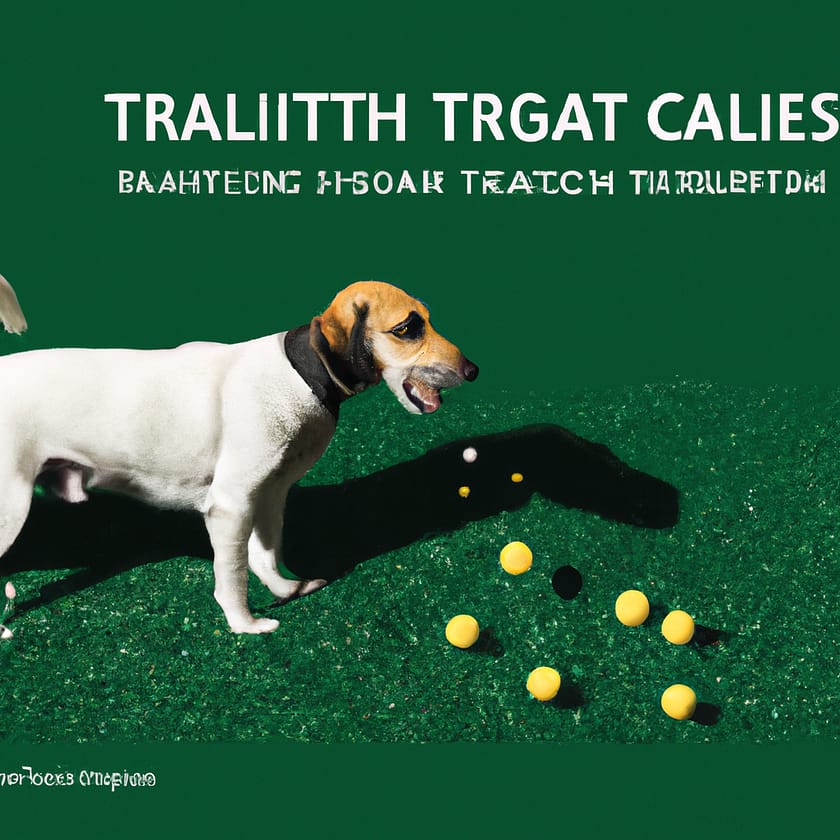Ataxia In Dogs: It’s More Than Just Clumsiness
In the world of dogs, there’s a condition that goes beyond mere clumsiness and causes a significant impact on their daily lives – ataxia. Ataxia in dogs is a neurological disorder that affects their coordination, balance, and ability to move smoothly. It’s a condition that deserves attention and understanding, as it can have a major impact on a dog’s quality of life. Whether you’re a dog lover or simply curious about their health, this article will shed light on the intricacies of ataxia and why it’s more than just clumsiness.

What is Ataxia?
Ataxia is a neurological disorder that affects dogs and can result in a lack of coordination and balance. It is more than just clumsiness; it is a condition that significantly impacts a dog’s quality of life. Understanding the causes, types, symptoms, and treatment options for ataxia is crucial for dog owners to ensure their furry friends receive the necessary care and support.
Definition
Ataxia refers to a condition characterized by an inability to coordinate voluntary muscle movements. It often results from damage or malfunctioning of the cerebellum, which is responsible for coordinating movement. When ataxia occurs, dogs may struggle with walking, balancing, and performing other activities that require precise control of their muscles.
Causes
There are several potential causes of ataxia in dogs, ranging from inherited disorders to infections. It is essential to identify the underlying cause to provide appropriate treatment and management for the affected dog. Some common causes of ataxia include:
Types
Ataxia can manifest in different forms in dogs, depending on the specific area of the nervous system that is affected. Understanding the different types of ataxia can help identify the underlying cause and guide appropriate diagnostic and treatment approaches. The three main types of ataxia in dogs are:
Symptoms
Recognizing the symptoms of ataxia is crucial for timely diagnosis and intervention. While the specific symptoms may vary depending on the type and cause of ataxia, there are some common signs to watch out for:
Causes of Ataxia in Dogs
Understanding the underlying causes of ataxia in dogs is vital for effective diagnosis and treatment. Here are some common causes that can lead to ataxia:
Inherited Disorders
Certain genetic conditions can predispose dogs to ataxia. These disorders are passed down through the generations and can affect various aspects of the nervous system, leading to ataxia.
Injury or Trauma
Head injuries, spinal cord trauma, or other physical trauma can directly impact the nervous system, resulting in ataxia. It is essential to provide immediate veterinary care in cases of trauma to minimize the chances of long-term complications.
Infections
Certain infections, such as distemper, meningitis, or encephalitis, can affect the nervous system and lead to ataxia. Prompt diagnosis and treatment of these infections are crucial to prevent further damage.
Toxicity
Exposure to certain toxins, such as lead, certain medications, or chemicals, can cause neurological damage and lead to ataxia in dogs. It is vital to keep dogs away from potentially toxic substances and promptly seek veterinary care if poisoning is suspected.
Metabolic Disorders
Metabolic disorders, such as liver disease or kidney dysfunction, can disrupt the normal functioning of the nervous system and lead to ataxia. Proper management of these underlying conditions is essential for minimizing the impact on a dog’s overall health.
Types of Ataxia in Dogs
Understanding the different types of ataxia can help determine the underlying cause and guide appropriate treatment approaches. The three main types of ataxia in dogs are:
Cerebellar Ataxia
Cerebellar ataxia is the most common type of ataxia in dogs. It occurs as a result of damage or dysfunction of the cerebellum, a brain region responsible for coordinating movement. Dogs with cerebellar ataxia may exhibit a lack of balance, shaky movements, and difficulties with coordination.
Vestibular Ataxia
Vestibular ataxia occurs due to dysfunction of the vestibular system, which is responsible for maintaining balance and spatial orientation. Dogs with vestibular ataxia may experience a tilting or head-tilting, difficulty standing or walking, and a loss of balance.
Sensory Ataxia
Sensory ataxia occurs when there is a disruption of sensory input to the nervous system, leading to difficulties with coordination. Dogs with sensory ataxia may have trouble placing their paws correctly or may appear unsteady on their feet.
Symptoms of Ataxia in Dogs
Recognizing the symptoms of ataxia in dogs is crucial for early detection and intervention. While the specific symptoms may vary depending on the type and cause of ataxia, some common signs to watch out for include:
Loss of Balance
Dogs with ataxia often demonstrate difficulty maintaining balance while walking, standing, or performing other physical activities. They may sway, stumble, or fall frequently.
Uncoordinated Movements
Ataxia affects a dog’s ability to control and coordinate their movements. They may demonstrate jerky or erratic movements, making it challenging to perform even simple tasks.
Head Tilting
A common symptom of ataxia, especially vestibular ataxia, is a noticeable head tilt. This head tilt is often a result of disruptions in the vestibular system’s function, which affects a dog’s sense of balance.
Abnormal Eye Movements
In some cases of ataxia, dogs may exhibit abnormal eye movements, such as nystagmus (involuntary eye movements), strabismus (lazy eye), or difficulty tracking objects visually.
Falling or Collapsing
Due to coordination difficulties, dogs with ataxia may fall or collapse unexpectedly, especially when engaging in physical activities or attempting to navigate uneven terrain.
Difficulty Swallowing
In certain types of ataxia, dogs may experience difficulty swallowing or have a hoarse bark. This may be a result of impaired muscle control in the throat and neck region.

Diagnosing Ataxia in Dogs
Diagnosing ataxia requires a comprehensive veterinary evaluation to identify the underlying cause and guide appropriate treatment. The diagnostic process may involve:
Veterinary Examination
A thorough physical examination by a veterinarian is the first step in diagnosing ataxia. The vet will evaluate the dog’s overall health, perform a neurological assessment, and inquire about the dog’s medical history.
Neurological Evaluation
A detailed neurological examination can help identify specific neurological deficits and assess the dog’s overall neurological function. This evaluation may include testing reflexes, coordination, muscle tone, and sensory responses.
Blood Tests
Blood tests can provide valuable information about the dog’s overall health, including potential underlying metabolic disorders or infections that could be contributing to the ataxia.
Imaging Techniques
Advanced imaging techniques, such as X-rays, magnetic resonance imaging (MRI), or computed tomography (CT) scans, may be necessary to visualize the dog’s brain and spinal cord for any abnormalities or damage.
Genetic Testing
If an inherited disorder is suspected, genetic testing may be recommended to identify specific genetic mutations associated with ataxia. This testing can help determine if the dog is a carrier or at risk of passing on the condition to future generations.
Treatment Options
The treatment approach for ataxia in dogs will depend on the underlying cause and severity of the condition. Here are some common treatment options:
Supportive Care
Supportive care focuses on managing the symptoms and providing comfort to the affected dog. This may involve modifying the dog’s environment to minimize hazards, using supportive devices to aid mobility, and ensuring a comfortable living space.
Medications
Depending on the specific cause of ataxia, medications may be prescribed to address the underlying condition or manage symptoms. Anti-inflammatory drugs, antibiotics for infections, or medications to improve neurological function may be utilized.
Physical Therapy
Physical therapy, including exercises and rehabilitation techniques, can help improve a dog’s coordination, strength, and balance. This may involve guided exercises, hydrotherapy, or use of specialized equipment to promote muscle control and mobility.
Surgical Interventions
In certain cases, surgical interventions may be necessary to address underlying structural issues contributing to ataxia. These interventions aim to correct abnormalities, alleviate pressure on the nervous system, or remove tumors affecting neurological function.
Preventing Ataxia
While not all causes of ataxia can be prevented, there are several steps dog owners can take to minimize the risks. Here are some preventive measures:
Breeding Practices
Responsible breeding practices, including genetic testing and selecting breeding partners without known genetic disorders, can help reduce the likelihood of passing on inherited forms of ataxia to future generations.
Vaccinations
Ensuring dogs receive appropriate vaccinations can help prevent infections that may lead to ataxia. Consult with your veterinarian to establish a suitable vaccination schedule for your dog.
Preventing Injuries
Reducing the risk of physical trauma can help minimize the chances of ataxia. Dog-proofing the environment, avoiding unsafe situations or activities, and keeping dogs on a leash during walks can help prevent accidents.
Avoiding Toxic Substances
Keeping dogs away from potential toxins, such as household chemicals, certain plants, and medications, is crucial for preventing toxic-induced ataxia. Be vigilant and ensure a safe environment for your furry friend.
Maintaining a Healthy Diet
Providing a well-balanced and nutritious diet is essential for a dog’s overall health. Proper nutrition can help prevent metabolic disorders that may contribute to the development of ataxia.
Living with Ataxia
Coping with a dog diagnosed with ataxia requires adaptability and attentiveness to their special needs. Here are some suggestions for living with ataxia:
Adapting the Environment
Modifying the home environment can help create a safer and more accessible space for dogs with ataxia. Removing obstacles, providing non-slip surfaces, and using ramps or stairs can facilitate mobility.
Assistive Devices
Depending on the severity of ataxia, assistive devices such as harnesses, slings, or wheelchairs can provide additional support for dogs struggling with mobility. These devices can help maintain independence and improve the overall quality of life.
Exercise and Enrichment
Engaging in appropriate exercise and enrichment activities can help stimulate a dog’s physical and mental well-being. Low-impact exercises, puzzle toys, and interactive playtime can be beneficial for dogs with ataxia.
Regular Veterinary Check-ups
Regular veterinary check-ups are crucial for monitoring the dog’s overall health and adjusting treatment plans if necessary. Your veterinarian can provide guidance on managing ataxia and address any concerns you may have.
Related Conditions
Ataxia is often associated with or overlaps other neurological conditions in dogs. Understanding these related conditions can help identify potential risk factors and provide comprehensive care. Some related conditions include:
Degenerative Myelopathy
Degenerative myelopathy is a progressive neurological disorder that affects the spinal cord, leading to loss of coordination and mobility. While distinct from ataxia, it can present with similar symptoms.
Hip Dysplasia
Hip dysplasia is a skeletal condition that affects the hip joints and can lead to secondary issues with gait and coordination. Although primarily a joint problem, severe cases may contribute to ataxic symptoms.
Wobbler Syndrome
Wobbler syndrome, also known as cervical spondylomyelopathy, is a condition characterized by spinal cord compression in the neck region. It can cause ataxia-like symptoms due to nerve compression and spinal instability.
Caudal Cervical Spondylomyelopathy
Caudal cervical spondylomyelopathy is a spinal condition that affects the neck and leads to nerve compression. It can result in gait abnormalities and difficulty with coordination.
Seeking Veterinary Care
If you suspect your dog may be experiencing ataxia or any related symptoms, it is essential to seek veterinary care promptly. Here are some guidelines for seeking veterinary care:
When to Consult a Veterinarian
Consult a veterinarian if you notice any signs of ataxia, such as loss of balance, uncoordinated movements, abnormal eye movements, or difficulties with swallowing. Early intervention can lead to more effective treatment and management.
Questions to Ask
When consulting a veterinarian about ataxia, consider asking the following questions:
- What are the possible causes of my dog’s ataxia?
- What diagnostic tests are necessary to determine the underlying cause?
- What treatment options are available, and what are the potential outcomes?
- Are there any potential complications or long-term effects associated with my dog’s condition?
- How can I best support my dog’s quality of life and manage their symptoms?
Follow-up Care
Follow-up care is essential for monitoring the progress of treatment, adjusting medications or therapies if necessary, and addressing any new concerns. Regular communication with your veterinarian is crucial for providing optimal care for your dog with ataxia.
In conclusion, ataxia is a significant concern for dog owners, as it can severely impact a dog’s mobility and overall quality of life. By understanding the causes, types, symptoms, and treatment options for ataxia, dog owners can proactively seek appropriate veterinary care and support. With early detection and intervention, dogs with ataxia can lead fulfilling lives with suitable management and adaptations to their unique needs.













